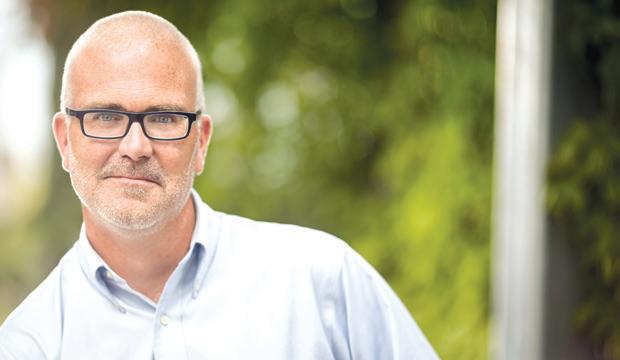































BY CHARLIE SENACK
There is something truly spectacular about the sky in the fall. The blue textures are crisp and bright, often without clouds. I can sit there for hours under a tree, enjoying the beauty around me.
But fall also brings mixed feelings. I’m always thankful when the weather cools from the ridiculous humidity of July and August, but there is always a reminder at the back of
my head of what’s to come. That period between September and December always comes fast, and a long winter follows. But let’s not talk about that yet. What I love about September, though, is the opportunity for a new routine. Kids are back in school, parents are back to work after summer
vacation, and it's time to hit reset on your lives. I’m already thinking about something new I can incorporate into my life, like a new fitness regime, diet, and maybe even try yoga (though don’t hold me to that).

In this issue of KT, we are launching our new Guide to Fall, a collection of activities and events you can participate in as you adjust to a new routine. Even though summer is soon over, that doesn’t mean the time for fun stops. We’ve also been continuing to work on website upgrades. Visit Kitchissippi.com for the latest news and information.






KITCHISSIPPI TIMES
Great River Media Inc PO Box 91585
Ottawa ON K1W 1K0
The Kitchissippi Times is an award-winning newspaper that has serviced Westboro, Wellington West, and surrounding communities for the last 20 years. The word Kitchissippi, meaning “great river” in Algonquin, is the former Indigenous name for the Ottawa River.
STORY IDEA? editor@kitchissippi.com twitter.com/kitchissippi
EDITOR
Charlie Senack charlie@kitchissippi.com twitter.com/charlie_senack
CONTRIBUTORS
Nathalia Lencioni, Amanda McLeod, David Cummings, Victor Vigas Alvarez, Marissa Galko, Aaron Reid, Christopher Smith and Dave Allston
PROOFREADERS Susan Rothery
ADVERTISING SALES
Jennifer Tackaberry 613-696-9482 jennifer@kitchissippi.com
CREATIVE DIRECTOR Tanya Connolly-Holmes creative@greatriver.ca
GRAPHIC DESIGNERS
Celine Paquette celine@greatriver.ca
FINANCE
Cheryl Schunk, 613-696-9490 cheryl@greatriver.ca
All other enquiries 613-696-9494 info@kitchissippi.com
DISTRIBUTION






A minimum of 16,000 copies are distributed from the Ottawa River to Carling Avenue between the Britannia and Preston Street communities. Most residents in this area will receive the Kitchissippi Times directly to their door. If you would like to become a distribution point, please contact us. Copies are available at Dovercourt Recreation Centre, Hintonburg Community Centre, and dozens of other pickup locations in the area.
DISTRIBUTOR Comet 2000
info@kitchissippi.com
The Kitchissippi Times is published by

FOUNDER PUBLISHER Mark Sutcliffe Michael Curran


BY CHARLIE SENACK
While there is still over a year to go before residents head to the polls for the city's next municipal election, unofficial campaigning has begun with two Kitchissippi residents planning to have their names on the ballot for mayor.
Three-term Kitchissippi Coun. Jeff Leiper said he is strongly considering running against incumbent Mayor Mark Sutcliffe, who is also a Wellington West resident and said he will seek a second term.
Leiper was already planning for this to be his final term as councillor, but started considering running for higher office after feeling discontent with how the city is being run. He most recently voted against the 2025 city budget.
“We are going into the fourth and last budget of this term of council. And as I contemplate that, I'm taking a look at where we are as a city right now. I continue to believe that we are going backwards in terms of the services that residents expect and deserve,” Leiper told the Kitchissippi Times.
“I've been a city councillor for 10 years now and there's been no diminishment in the number of emails and notes that come into me with respect to things like sidewalks that are not being maintained, garbage cans
in parks that are overflowing, slow bylaw response when people have concerns,” he added. “I think most residents consider that we're in a worse place today than we were a decade ago.”
One of Leiper’s most passionate files is transit. In 2024, OC Transpo ridership increased seven per cent with almost 68 million trips taken. But that is still significantly lower than before the COVID-19 pandemic. The new year brought price hikes with single-ride fares now costing $4.00. Seniors fares, which were supposed to see a 120 per cent increase, instead only went up 19 per cent to $58.25 a month.
This April, OC Transpo also launched ‘New Ways to Bus’ which changed 80 per cent of routes and reduced service by 74,000 hours a year. Leiper felt that was a wrong decision and said it would not set the transit organization up for future growth.
“I think matching the transit service to the lower revenues sets us up poorly to ensure that transit is a great option moving forward. One of the emblematic discussions that we had was with respect to LRT frequency. Last year, OC Transpo reduced its service frequency on the LRT from four minutes to 10,” recalled Leiper. “I brought a motion to council to try to restore those
hours. It would have been a relatively small investment, but council was unwilling to do that. And I didn't have the Mayor's support in doing that.”
Perhaps one of Leiper’s greatest challenges will be winning over support from suburban parts of the city which typically vote for a more Conservative-leaning Mayor. In the 2022 municipal election, left-leaning Mayoral candidate Catherine McKenney took 37 per cent of the vote, with Sutcliffe taking a small majority of 51.3 per cent.
In winning, Sutcliffe took all but five of the city’s 24 wards with McKenney getting a majority of votes in the core with Kitchissippi, Somerset, Rideau-Vanier, Rideau-Rockcliffe, and Capital wards.
But Leiper wants to remind everyone that he grew up in Orleans and understands that each part of the city has its own unique challenges.
At the beginning of his council reign, he was more likely to vote against development applications, but now as the chair of planning and with years of experience under his belt, the urban councillor said he takes a “more pragmatic approach to land use” given municipal limitations with the direction

Kitchissippi Coun. Jeff Leiper said he is discontent with the direction city hall is taking.
PHOTO BY KEITO NEWMAN.
upper levels of government are taking.
Leiper also said urban and rural voters care about the same delivery of services which they pay taxes for.
“I think the sense is that those services are getting worse right across the city. And that may manifest itself differently in different parts of the city,” he said. “That could be overflowing garbage cans, potholes that are increasing or roads that are not being well maintained.”
“And of course, transit right across the urban and suburban area is a critical question. For many suburbanites, their choice in order to get downtown is either take public transit or drive,” Leiper added. “When public transit is not a compelling choice, then they have no choice but to drive. We hear right across the city about the increasing congestion and the frustration that that creates and the diminishment of the quality of life.”
I've been a city councillor for 10 years now and there's been no diminishment in the number of emails and notes that come into me with respect to things like sidewalks that are not being maintained, garbage cans in parks that are overflowing, slow bylaw response when people have concerns.
— KITCHISSIPPI COUN. JEFF LEIPER
BY CHARLIE SENACK
While Mayor Mark Sutcliffe hasn’t officially announced he’s planning to run for a second term, the Wellington West resident has hinted in various media interviews that his name will be on the ballot again in 2026.
And if social media is any indication, it appears unofficial campaigning season has already begun. Throughout July, Sutcliffe posted a series of videos to social media where he ran through a highlight reel of accomplishments over the past three years.
On public safety, Sutcliffe said the city hired 134 new police officers in 2024, which is “the largest group of new officers in the history of the Ottawa Police Service.”
“We also expanded our special constable program to add extra support to frontline officers so they can focus on what they do best,” said Sutcliffe. “And we are introducing the district policing model to bring police officers to every community in the city.”
The Mayor also emphasized that level zero instances when there were no paramedics to respond to emergency calls were reduced by 80 per cent in 2024. He said that for the first time since 2020, Ottawa paramedics met all provincial legislative time targets.
In December, city council passed the 2025 budget with a 3.9 per cent tax hike. Six councillors voted against it, stating there was not enough money to adequately fund city services. Sutcliffe himself admitted he was “frustrated” and that difficult decisions had to be made due to a funding shortfall from the provincial and federal governments.
To put a positive spin on it, Sutcliffe is highlighting that the roads budget has

Incumbent Mayor Mark Sutcliffe has previously indicated he will run for a second term.
PHOTO BY ELLEN BOND.
increased by 40 per cent and the sidewalk budget by 30 per cent.
The city is also investing “in building a stronger and greener local economy,” said Sutcliffe, noting OC Transpo is going through the biggest transportation infrastructure transformation in history.
“We are expanding our electric light rail line, we are introducing hundreds of zero carbon buses and replacing our old diesel buses,” he said
OC Transpo was expecting 26 electric buses by the end of 2024 and another 77 by the end of 2025, but as of February, only eight were running. It has blamed a “delay in electrical infrastructure work at OC Transpo maintenance facilities” for the slowed rollout. A total of 350 new zeroemission buses are expected to be on city streets by the spring of 2027.
Because of an aging fleet, OC Transpo purchased 11 used buses from Waterloo, Ont. which were 15-years-old, but were “in good condition.” The transit organization also said it purchased 50 new diesel buses that would arrive in 2026 and 2027.
EVENTS
• Movie in the Park: Fri. Aug. 22, 8pm
• Try it week in September for some rec & fitness classes: registration begins Tue. Aug. 26.
• Civic Holiday weekend Aug 2-4: see the schedule on our website
SUMMER CAMPS CONTINUE
Registration is ongoing, and spaces are still available for Singing, Paddle Sports, Junior Lifeguard, Theme Camps, Photography: Action Shots, Flag Rugby, Forensic Science and at our Satellite Location, Accora Village!
SUMMER & FALL SWIM LESSONS
There are still spaces in all weeks of our Summer Monday to Friday swim lessons. Private lessons are added every week. Fall swim registration is open: grab your top picks of days & times.
FALL SPECIALTY & AQUA FITNESS
Fall Specialty Fitness and Aquafit classes begin registration on Tuesday, August 5th at 8:00AM. Programs start in September. And it’s not too late to join Summer Specialty classes.
SESSIONAL RECREATION PROGRAMS
Register now for August recreation workshops. Registration begins Aug. 5 for Fall recreation, including dance, sports, pottery, art, music, culinary and more.
FREE WITH FIT PASS

Fit Pass holders enjoy access to the Fitness Centre and 45+ Fit Pass classes per week, including group fitness, spin, aquafitness, online classes, and drop-in swims.
LEADERSHIP & CERTIFICATIONS
Register now for Home Alone, Babysitting, Bronze Star, Medallion and Cross; First Aid, Swim instructors, National Lifeguard and more.

We have some clients from Vancouver. They come at least three or four times a year. What do they come for? I don’t know. Maybe it’s because we treat each other well. — RAMON CARBALLUDE


BY VICTOR VIGAS ALVAREZ
The buzz of hair clippers and the snip-snip of scissors giving new hairstyles fill the air at the Westgate Barber Shop, but come July 31, the shop will be closing its doors as part of a broader shut down of the Westgate Shopping Centre.
The local barbershop opened its doors in 1955. Owner Ramon Carballude, 85, has been with the shop since 1968. He and his wife took full ownership of the business in 2000.
While hair styles have come and gone, the need for a quick snip will always be there. What’s also changed: the cost of a haircut. Carballude said that when he became the owner, a fresh trim cost only $1.75.
In an interview with the Kitchissippi Times, Carballude, who moved to Canada from Spain in 1965, said he worked a few jobs before returning to the trade he first learned in his home country.
It’s hard to know exactly how many haircuts Carballude has given but it would be in the tens of thousands. On a Thursday afternoon when KT stopped by, there were many regulars and some new business in the crowded shop
“It’s not just people from around here who come. Some people drive an hour.
They come from Carleton Place and other small towns,” he said. “We have some clients from Vancouver. They come at least three or four times a year. What do they come for? I don’t know. Maybe it’s because we treat each other well.”
Carballude said that having a loyal clientele has been an “honour and a joy” for him.
Sian Clark, whose husband usually cuts her kids’ hair, said she brought her son in for a trim at the Westgate Barber where her brother, father, and grandfather all went.
When asked what the shop has meant for him, Carballude said it’s given him the good fortune of meeting good people and paying the bills. “What more could you want?” he joked.
Carballude doesn’t plan to turn off the light on his barber pole just yet. A new barbershop will open just down the road at 1572 Carling Ave. Hoang Vo, who has worked at the barbershop for 27 years, is taking over the business and said Carballude will stay on without the pressures of being the owner this time around.
When Carballude isn’t cutting hair, he will be spending his semi-retirement fishing, vegetable gardening, and wine making. He also intends to vacation in northern Spain where he owns a house.
RioCan, which owns the Westgate Shopping Centre, is in the works of redeveloping the site of Ottawa’s first mall. Original plans called for six towers at the site. The first 24-storey building was built on the corner of Carling Avenue and Merivale Road where the Monkey Joe’s restaurant used to be located.
Phase 2 of the project was supposed to see the Shoppers Drug Mart come down with the mall remaining, but those plans changed when the pharmacy didn’t move as planned into the new apartment groundfloor retail space.
In an emailed statement, River Ward Coun. Riley Brockington said that all tenants of the Westgate Shopping Centre have been told to vacate by Oct. 31 2025.
He also confirmed the building will be demolished, but that its timeline remains unknown. Shoppers Drug Mart will remain standing.
It’s also believed the residential component of the site has been reduced, with a new grocery store being built once the aging mall comes down. It will serve the surge of new residents moving into the area, including at the Talisman Apartments across


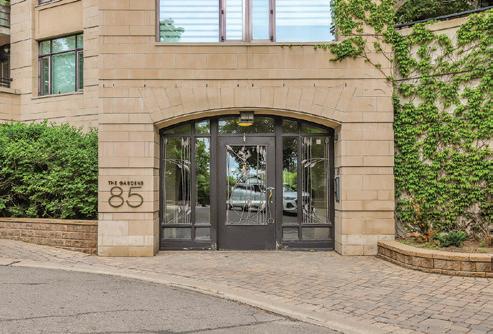
the street. City council has approved plans for 24 towers to be built between Merivale Road and Clyde Avenue, which will create housing for about 9,000 new residents.
Kitchissippi Times reached out to RioCan for comment but did not receive a response in time for publication.
It’s unclear where all existing tenants of the mall will go, but Trillium Dental has a sign on its door saying it will open a new office at the Rhythm Apartments located on the Westgate grounds Oct. 31. Both Carducci’s Shoes and Satchels Luggage have announced they are moving to 1337 Wellington Street West near Ross Avenue.
Capital City Dance has already moved to its new location at 74 Jamie Avenue in Nepean.
Brendon Banville, the owner of Superior Photo, has decided to retire after owning the business since 1986. With only one part-time employee, moving would mean 10 hour days, which the 65-year-old decided not to pursue.
Across the almost vacant mall strip, Linda Wang from European Fine Tailoring said she also plans not to reopen after being in business for 18 years. Instead she intends to keep seeing some of her regular clients while operating out of her home.















Ontario has stated it has no intentions of enacting similar legislation, but the scaling back of rights has many people worried.
At Kind Space, an Ottawa LGBTQ2S+ community centre which has been in operation since 1984, demand has recently increased.
“The world is pretty terrible for a number of reasons; everything happening in the United States, the varying genocides happening in the world, but also the way that has manifested in Canada as well,” said Carling Miller, executive director at Kind Space. “All of that has taken a toll on people’s ability to function. People are coming in and having conversations with us. There is more anxiety, and people want to feel like they have some kind of control over things that feel uncontrollable at the moment.”
BY CHARLIE SENACK
In a capital city where queer and trans communities have long fought for visibility and inclusion, local LGBTQ2S+ groups continue to offer safe spaces in what could seem like an increasingly dividing world.
While much progress has been made since the gay-bashing days of the ‘70s and ‘80s, homophobia is on the rise. In 2023, Statistics Canada reported that hate crimes targeting sexual orientation increased 69 per cent from the previous year. And now there has also been a growing push in many parts of the world to reverse decades of progress, especially within the trans community.
Across the border, executive orders have been signed which declare gender must be recognized as a fixed, binary status as determined at conception. Gender-affirming care — including puberty blockers and hormone therapy — for Americans under the age of 19 have been banned. And transgender people have been banned from serving in the military.
Even here in Canada, the transgender community has been dealt some blows. Saskatchewan enacted Bill 137 which required parental consent before a child under 16 could use their preferred name or pronouns in schools. In Alberta, a suite of bills were passed banning genderaffirming surgeries for those under 18 while also restricting puberty blockers and hormone therapies for youth under 16 unless certain conditions are met.
To meet that demand, counselling capacity has recently been tripled to give people struggling with any issue more support. As a result, the wait-list for shortterm counselling has been moving quickly.
“It’s not centred solely on if people are having struggles around their sexuality or gender. It could be people struggling with stuff around work, family, homelife, depression or anxiety,” said Miller.
Kind Space has also been able to keep its Trans ID program running through the summer thanks to a partnership with Pro Bono Students Canada. While it typically only runs during the school year from September to April, some of the students decided to keep the endeavour going.
“There's lots of places that require ID verification for various different services that you're trying to get, jobs, or even housing applications. For lots of people, it's also a pretty major safety issue to make sure that your ID is matching your gender and your gender presentation,” said Miller. “There is lots of paperwork to fill out and it can be long and complicated. If you miss one small section or check the wrong box, then you’re waiting weeks for a rejection, only to do it all over again.”
Outside of their support services, Kind Space also has a mini food bank where its clients can take some food and a clothing drive to help those in need.
The LGBTQ2S+ organization has also needed to take on more of an educational role after other groups lost funding. In August, it plans to start system development resource mapping for LGBTQ2S+ refugees.
If you’re a member of the LGBTQ2S+ community in Ottawa, it can be hard to find a footing. The Lookout Bar in the ByWard Market is a hangout spot for young queers, with T’s Pub on Somerset Street West a regular place for the older crowd.
But what if bar hopping just isn’t your thing?
For the last two years, the Ottawa Gay Garden Society has been planting roots for friendship. The endeavour was started by Kyle LeMay who said LGBTQ2S+ groups which existed in the capital just didn’t pique his interest.
“I think a lot of people like gardening, but many of us don't have garden space of our own. A lot of people in our group are renters or people without yards,” said LeMay, who rents in Centretown. “We are capitalizing on unused spaces, little right of way spaces and little planters, and then having meetups so that people have a space to do things like that in.”
On average 15 to 30 people attend each meetup. It currently looks after multiple garden beds on the rooftop of the National Art Centre which it’s turning into a

There is more anxiety, and people want to feel like they have some kind of control over things that feel uncontrollable at the moment. — CARLING MILLER
wildflower meadow. The group also looks after a sidewalk garden on MacLaren near Somerset.
LeMay said getting out in nature is a perfect way to escape life stress and the never-ending cycle of negative headlines.
“So much of the news cycle is depressing or scary, especially when you think about American news. We can’t influence a country to our south's politics, but we can plant flowers and we can grow trees and we can support pollinators. So I feel like that unites people to a good cause,” he said.
Another group known as the Ottawa Queerly Sewcial Circle is also stitching together communities. It was started by Josephine Neilsen who struggled to find her place after moving to Ottawa on and off over 20 years.
“I think I felt a little too old to be in a lot of the queer spaces in Ottawa, being in my
late 30s and a little too young to be in other queer spaces. There was nothing really that I felt made sense for me in that way,” said Neilsen. “A lot of the sewing and crafting areas that I encountered were very straight, and after COVID, I just wanted community.”
Neilsen’s partner suggested she start her own group and the rest was history.
Expecting only two of her closest friends to show up, the first meetup brought 18 people, then 20. It just kept growing.
Meetups were first held at the Grove Studio in Hintonburg and have since relocated to Chinatown. They meet monthly, but spontaneous other events are also held, including pine needle workshops and craft swaps.
“I try to make it as welcoming and clear that it's available to everyone — allies included — because there is no point in cutting ourselves off into little
groups. I think we need to foster community amongst everyone,” said Neilsen.
During the sewing group’s recent one year anniversary, Neilsen held a fundraiser for Wellington West’s Ottawa Trans Library which raised just over $1,700.
She said it’s important that everyone does their part to make the world a better place for LGBTQ2+ people.
“I am privileged in that I am a white female and my partner is a cis man. I'm very passing in the hetero normative culture that we live in. But it's still scary because I know that others are going through so much and that even though I may not be physically in danger, my heart is in danger,” said Neilsen, who identifies as queer. “My insides, who I am, feels like it’s being physically attacked even though I am predominantly safe in the physical way.”




BY CHARLIE SENACK
Rainbow Pride flags will once again proudly fly along Bank Street this August as Ottawa gets set to host its annual Capital Pride festivities.
The week-long event begins Aug. 16 and wraps up on the 24th.
“We kick things off the first weekend of the festival with a show in partnership with the Ottawa Fringe Festival. It's called Queered Minifest. A queer jury was assembled and
they adjudicated over 10 shows that were self-selected to be part of this process to be restaged during the Capital Pride Festival,” said Callie Metler, executive director of Capital Pride.
On opening weekend, a family picnic is being held at Hintonburg Park in partnership with MAC Ottawa, Big Brothers, Big Sisters, and Kind Space. There will also be a free hot dog barbecue with bouncy castles, yard games, and colouring for the kids.
Then Aug. 21, the Capital Pride pageant


is back where 2025’s Royal Court will be crowned Mr and Mrs Capital Pride.
Activities then wrap up with the annual Pride parade on Sunday, Aug. 24. More than 11,000 participants and over 225 groups are expected to take part. The parade route will begin at Elgin and Laurier and end at Albert and Kent.
Over the last few months, many LGBTQ2S+ organizations have seen a rollback in diversity, equity, and inclusion initiatives and programs, due to sponsors reducing funding. The scaling back came after U.S. President Donald Trump was elected.
Pride Toronto has stated they are short $900,000 and might need to scale back programming next year. Capital Pride Ottawa says they too have been feeling the cuts, but said government sponsors are returning and that the festival will continue as usual.
“The festival is not going to feel any different for folks attending this year,” said Metler. “It's still going to be a big celebration and have those massive numbers in Ottawa that we love to see.”
While Capital Pride is important every year, Metler said championing the cause now is more needed given an ever dividing world

The annual Capital Pride parade returns to Ottawa on Aug. 24. PROVIDED PHOTO.
full of hate, homophobia, and transphobia.
“There's always going to be backsliding, but that's why the celebration is important. It helps us mark those gains, remember those gains and keep us inspired for the work we do in years to come,” she said. “Pride is important to show that we are moving the needle and that there have been wins. We continue to be a safe space for everyone.”


















Shop new and gently used home items at discounted prices with NO HST.
Check out our newest location:
250 City Centre Avenue #118 in Hintonburg

Refresh your home décor this Fall!
Fall is the perfect time for those long-awaited home improvement projects, whether outside or in, and there’s no better place to start than the new Habitat for Humanity ReStore. The brand-new location at Unit #118-250 City Centre Avenue is your onestop shop for quality furniture, appliances, building materials, and home goods, all at discounted prices and no HST.
Habitat for Humanity Greater Ottawa stands alone as the only local charity offering affordable homeownership programs in the Ottawa area. By building secure, decent homes, they help bridge the gap between renting and traditional home buying. Even better—Habitat homes are permanently affordable. All three ReStore locations in Ottawa are proudly owned and operated by the local Habitat and donations and purchases help more homeowners
build better lives for themselves and their families.
In addition, every piece donated and sold by ReStore is another item diverted from local landfills, which greatly improves the environmental impact of the entire city. Last year, its Ottawa locations diverted over 2.2 million pounds of waste from local landfills, and they’re hoping this new store will help them beat that amount this year!
And after your fall cleanup, you can donate that gently used furniture or reno material right back!
The ReStore gratefully accepts furniture, appliances, building materials, and home décor. Your donations help stock the shelves, support local families, and keep reusable items out of the landfill.
While hiring for the new location has wrapped up, there are still plenty of ways to get involved. Habitat for Humanity ReStore is always looking

for enthusiastic volunteers to support its efforts. Whether you’re lending a hand on the sales floor or helping advance Habitat’s work in other ways, there’s a role for you. To find out more about volunteering, reach out to Julie, the Community Engagement Coordinator, at volunteer@habitatgo.ca.
And don’t forget—ReStore purchases are tax-free, which means even more savings for a cause that truly builds futures for those most in need.
BY CHARLIE SENACK
Anew vibrant community near Plant Recreation is one step closer to construction after the city’s planning and housing committee approved new zoning for the site.
Existing plans call for 600 housing units in four buildings, a new French school, daycare, an expanded recreation facility, and enhanced greenspace.
While neighbourhood residents support the plan, they would like to see some changes made.
David Seaborn, planning and



development coordinator with the Dalhousie Community Association, took issue with the plan’s proposal to increase the number of outside parking spots from 40 to 60, especially when an underground parking facility is planned.
“We have two transit lines nearby, bus routes going by, and the multi-use pathway. The existing secondary plan is clear that surface parking should not be allowed,” said Seaborn.
Resident Carol Sissons, who successfully advocated not to have the city sell the Plant Recreation Facility years ago, echoed those statements, noting it would take away from







public greenspace. A 2019 study showed Somerset ward had the lowest tree canopy in the city at 22 per cent.
The city indicated a partial basketball court would need to be removed to make way for a bus-only lane, which would be used for the French school and emergency vehicles. When asked if it would be re-added to the park, staff noted that as a possibility, saying a ‘needs analysis’ still needs to be undertaken.
Somerset Coun. Ariel Troster said she also has concerns about the expanded parking and plans to bring a motion forward to the council.
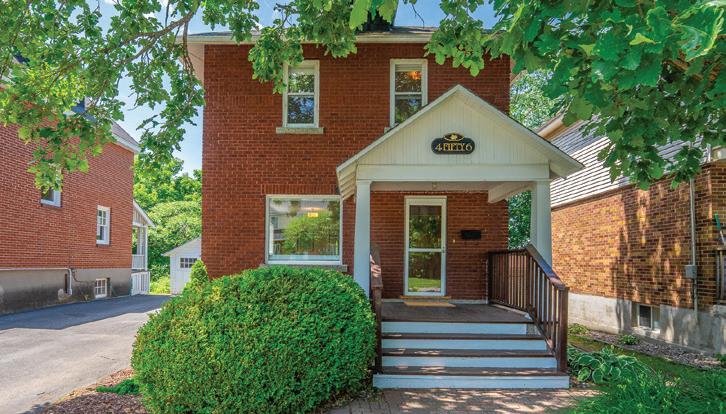

When the nearby French school Louise Arbour opened at 175 Beech Street in 2017, its location was always supposed to be temporary. Funding for a new building to be constructed at the Somerset site has been in place for three years, but the project has faced countless delays.
During the planning committee meeting, concerned parent Brigitte Leblanc-Lapointe stressed the need for shovels to be put in the ground now. She said this year, the first cohort of students graduated from Grade 6.
“At this point, there is a generation of students whose elementary school has been plagued by inadequate facilities,” she said.
When Louise Arbour first started welcoming students, the population was 129 pupils with room for 200. But today, 350 students are enrolled at the school.
“The school is completely at its max. To meet this need, there are seven portables in the lot; the gym, music room and library are all on the exterior of the main building,” said Leblanc-Lapointe.
The worried parent also described stairways being used for storage, which she called a “fire safety risk,” no ventilation systems, and only eight toilet stalls with four urinals for the expanding student population.


















BY NATHALIA LENCIONI
Inside a sun-drenched storefront nestled on Somerset Street West, a towering ceramic Dalmation stands guard over a collection of vintage oddities: pottery from eras past, faded paintings, even a sprawling retro floor lamp by Canadian ceramicist Maurice Chalvignac.
The new hole-in-the-wall is called Curious Times Collective, a passion project started by former Hill Times journalist Chelsea Nash and her business partner Elena Chiara.

On social media, the seasoned writer joked she traded in her pen to be an entrepreneur because it was the “less stressful option” during an economic crisis. But it goes beyond that.
Ottawa’s urban core is undergoing a vintage revival, with thrift and antique shops not only thriving, but finding a renewed customer base by offering uniqueness, nostalgia and sustainability.
“We met at markets,” said Chiara, who is a graphic designer by trade. “I have organized vintage markets in the city since I was 16, and Chelsea signed up for our market as a vendor. We became friends, but we’ve also always dreamed of having our own store… Taking on something of this magnitude is impossible to do alone.”
Nash said her and Chiara’s goals were aligned early on, when the now business partners daydreamed of opening their own store over social drinks.
Nash said the warm welcome they have received from neighbourhood business owners has been very important during this career transition.
“When you think about starting your own business, you think you’d lose that kind of coworker relationship. But now we get it from neighbouring business owners,” said Nash. “A lot of them came by in the first month and introduced themselves, chatted with us, bought us presents and bought things in the store, to show their support and kind of welcome us.”
Nash said what sets Curious Times Collective apart is its curation and the care that goes into every item found.
“Every single item is found by us, cleaned by us. A lot of them are repaired,” said Nash. “I think ultimately what we wanted to provide for this space was good quality, unique and hard-to-find items that are also ready for people to take home and use. We're not a thrift store where you might find something that has a hole in it and smells like cigarettes.”
The owners pride themselves on contributing to sustainable shopping by repairing items that have minor damage and offering a financial “middle ground” between pricey vintage boutiques and rummage-bin thrifts.
Their selection encompasses everything from quirky mid-century lamps rescued from a ‘60s Toronto pizzeria to rare European trinkets and even items that hold personal significance.

After a test run with a pop-up market and a stroke of good fortune - a move-inready retail space with fixtures left by the previous resident Darling Vintage - the store opened and was quickly embraced by the community.
“Just how positive the reception has been is incredible,” said Chiara. “Truly, the neighbourhood has been super welcoming. A lot of people online comment, ‘You're going to be so successful in this location.’ And they’re right. It’s the best neighbourhood.”
“My grandparents used to own a music box store in the ‘90s called Mr. Music Box, in Queens Key in Toronto,” said Nash. “My grandfather has a lot of different music boxes he's been holding onto for years, and with moving and downsizing we have some of those.”
Beyond aesthetics, the shop is designed as a space for storytelling, sustainability, and self-expression - a stark counterpoint to the mass retail beige monoculture.
“We believe in highlighting and amplifying the value of second-hand items,” said Nash. “They're better quality, the design is more interesting…Older objects could even let customers learn about a bit of world history through a small ceramic figurine of a duck.”





You can now put on your bathing suit and pack a picnic when heading to Westboro Beach.
The popular swimming hole finally reopened to the public on a dreary June 1st morning after years of construction delays.
But the wait was worth it. The $21 million revamped site includes picnic and volleyball spaces, outdoor showers, accessible washrooms/changerooms, a historical-themed play area for children, and a scenic lookout of the Ottawa River, including the Skead’s Mills ruins.
“The NCC’s design excellence and innovation are on full display at Westboro Beach, where nature, community and history come together,” said National Capital CEO Tobi Nussbaum in a statement. “With the community’s engagement and support, we were able to deliver a project that enhances the shoreline in the west end and is emblematic of our commitment to creating sustainable, accessible and vibrant public spaces in the National Capital Region.”
The original Westboro Beach Pavilion was designed by James William Strutt, a prominent Ottawa architect, who built the site between 1965 and 1967. His designs often emphasized experimental forms, environmental sensitivity, lowcost construction, and straightforward assembly.
The three original triangular structures designed by Strutt are still there, and the NCC plans to soon display fossils inside the pavilion which were found during the years-long construction. Some date back over 500 million years.
Westboro Beach is now being painted as a year-long attraction. In the winter when sunbathing might not be the best idea, the Kichi Sibi Winter Trail will utilize the space for snowshoeing, skiing, and winter biking.
On June 26, a few dozen people gathered on the sandy beach for a barbecue to celebrate the beginning of summer. There were hotdogs, hamburgers, and live musical entertainment.






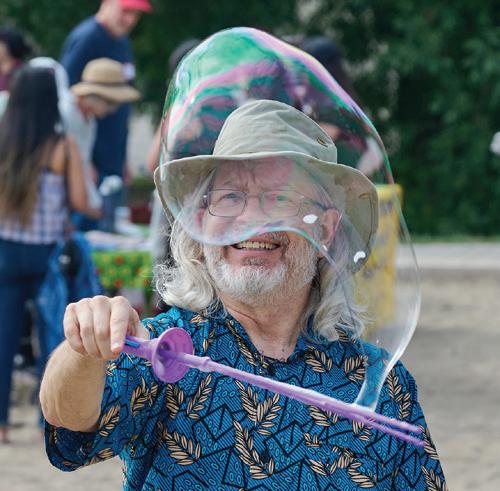

















BY CHARLIE SENACK
If you have lived in the Westboro community, chances are you have passed the Ottawa River hundreds of times and have marvelled at its beauty. But now you can experience it a different way: by taking a guided tour down the historic waterway.
In a few weeks, Renfrew-county based Wilderness Tours is set to offer river tours out of the recently re-opened Westboro Beach. They won a bid by the National Capital Commission to operate a cafe on the ground floor of the pavilion and wanted to share the “magic of the river” with the public.
“What's perfect about Westboro Beach is it's on the Kichi Zibi Mikan Parkway, it's on the bike trail. You can ride a bike on a paved trail from Kanata West all the way to Orleans. It goes right by our doorstep,” said Wilderness Tours founder Joe Kowalski.
“The area is packed all the time and in the winter it's used for cross-country skiing.
The Westboro light rail station which will open in a year or so is literally only a block away.”
Branded as the “Westboro Beach Club,” the main attraction will be lazy river tubing which will span four kilometers of the Ottawa River and ends at Lemieux Island Park near the Bayview O-Train station.
“It is about a two and a half hour journey and hugs the riverbed,” said Joel
opened an outdoor bar where you can stop for a coffee or quick meal. It serves a variety of salads, sandwiches, and ice cream. Beach equipment is also available for rent and a membership deal for regular users.
“We have stand-up paddle boards, kayaks, floaties, beach chairs, beach umbrellas, a lot of the things that people want to have at the beach, but don't necessarily want to carry back and forth,” said Joel. “The membership program will allow people to use it even more easily.”
Wilderness Tours started in Foresters Falls in 1975 by the elder Kowalski when he was only 25. His inspiration came after reading The Hobbit and The Lord of the Rings books which filled him “with desire for adventure.” The only problem? How to fund it.
So Joe pre-sold the water rafting trips in order to purchase the needed equipment. Their first structure was a Canadian Tire tarp hung between the trees. In the summer of 1995, he took 400 people rafting – a number that grew to 40,000 customers each summer a decade later.
“I am the poster child for bootstrapping a business,” said Joe. “It was certainly a struggle in the beginning because I didn't come from a business family. I had no business experience, but I was passionate about running rivers.”
Back then there was no such thing as a white water rafting business.
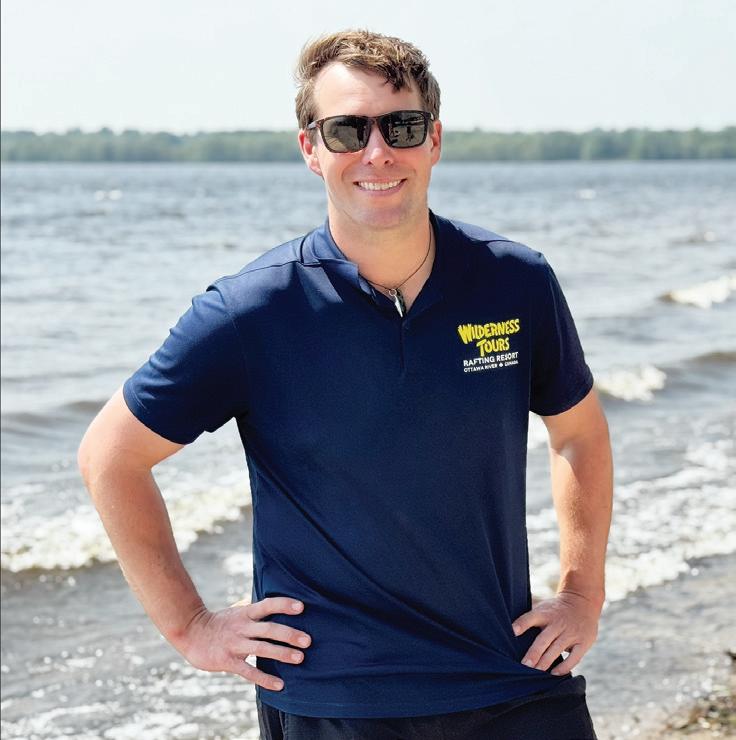
Kowalski, Joe’s son and vice president of Wilderness Tours. ”We’re also going to do a Voyageur canoe tour, which will go from the beach to the Deschenes Rapids. You’ll also get to see the Deschenes ruins, a really neat structure in the middle of the river that most people have never seen.”
Wilderness Tours also plans to host a variety of instructional programs including how to paddle a canoe or kayak, said Joel.
On land, the Westboro Beach Club has
Wilderness Tours is credited as being North America's first adventure resort. It has been the springboard to launch a variety of other tours in the region, including Saute-Moutons in Montreal which goes into the Lachine Rapids, and Whirl Pool Jet Boat tours in Niagara Falls. The water sport made a splash in the Capital about a decade ago when Wilderness Tours started Ottawa City Rafting, a two and a half hour guided tour of the Ottawa River, which includes views of Parliament Hill, and follows the original path followed during ByTown’s logging era.
BY MARISSA GALKO
ByWard Market staple The Grand Pizzeria will open a second location in the newly unveiled Westboro Beach pavilion this fall.
John Borsten, who runs The Grand along with other Ottawa eateries including Zak’s Diner, Metropolitain Brasserie and Starling Restaurant, said when construction was ongoing for the new pavilion, he went to take a look – not for business purposes but as a curious resident.
“I went there back in November and I was just like, ‘Wow, this is unbelievable. I had no idea what they were doing here’
… I’ve said for years we have this beautiful river flowing by and there’s nowhere to spend a dollar on it. No dining. There’s really a totally underserviced market,” he said.
Borsten and co-owner Dave Mangano, who runs the ByWard Market location, decided to get in touch with the National Capital Commission about the vision for the new pavilion. Now, they have just signed the lease for the new The Grand at Westboro Beach and, after about four


ByWard Market location, but Borsten said he’s open to adapting the menu to better serve the area.
“We make everything in-house (with) imported ingredients from Italy … It won’t look the same because the building of The Grand (in the Market) is 150 years old and this kiosk is brand-spanking new. It will be The Grand, but we will adjust to that location as we see fit or necessary. We’ll do whatever people want,” he said.

months of construction, the restaurant is expected to open in late summer or early fall.
The Grand at Westboro Beach will have all the Italian favourites available at the


















He said he expects to do weekend brunches as well as serve breakfast seven days a week.
Borsten said he hopes that all-day offerings will continue to bring people in, even in the winter when beach-going isn’t as popular.
“There’s a whole neighbourhood right there. It’s right on the parkway. The view is spectacular in every season … People are skiing, biking, running by that space all the time. It’d be a great spot for bikers, runners, skiers to sort of start and stop from their workout, have lunch or dinner or breakfast or a drink. It’s kind of got it all,” he said.




BY AMANDA MCLEOD
Canadians have become increasingly familiar with the term “housing crisis” in recent years. Defined by a shortage of units and rising mortgage and rental costs, many people are being priced out of home ownership or even safe, adequate rental housing. The impact cuts across demographics — young adults, newcomers, low-income families and even middle-class earners are all feeling the strain.
Carla Shipley is Executive Director of Unity Non-Profit Housing Corporation Ottawa, which owns and operates two subsidized housing properties — one in Hintonburg and the other in Vanier. The organization offers both below-market rent (BMR) and rent-geared-to-income (RGI) agreements.
But Shipley says the crisis goes beyond simply building more homes. She points to a complex and fragmented funding system involving all three levels of government.
“A lot of the programs require you to


get funding from multiple sources,” she said “You get a little bit here, a little bit there. When we look for an influx of a loan or grant funding, it requires an output of cash from us because the accessibility, energy efficiency, engineer's reports for those things, we have to fund. For small housing providers, the reality is that there
are very few that can actually take on [building large scale projects].”
On top of cobbling together funding to maintain and improve buildings, Shipley talks about the importance of providing supportive housing services for the communities. Many subsidized housing applicants are dealing with addiction

and mental health issues, or are refugees fleeing war, violence or persecution. Support and settlement services need to cover a wide range of fundamentals, including language instruction, mental health support, addictions counseling and employment resources.
Unity’s flagship property, built


in the early 1990s in what was then Mechanicsville, welcomed many Somali refugees fleeing that country’s civil war. The building was created in partnership with the Ottawa Community Immigrant Services Organization, which still operates on site.
“They [OCISC] were there to offer support for new immigrants and refugees, and we were the housing piece,” says Shipley. “The idea was to provide affordable housing for immigrants and refugees in a multicultural community, so we have one, two, three and five bedroom apartments for multi-generational families.”
Ottawa Community Housing, another local subsidized housing organization closely affiliated with the City of Ottawa, offers similar support and housing options – but on a larger scale.
“We’re basically running a small city,” said Cliff Youdale, OCH’s chief development officer. “We have over 32,000 tenants, about 15,500 homes, and we provide a wide range of affordability — but primarily deep affordability in our stock. It’s certainly people that are in deep need that benefit.”
While OCH is currently the largest subsidized housing organization in Ottawa, that wasn’t the case a decade ago.
“It was a fairly static number of units for many years, and that was just a byproduct of where the governments were at the time,” said Youdale. “That stock may have served its purposes back in the '80s and '90s but we needed to grow and increase that portfolio. Over the last couple of years, we’ve had about 1,000 units in construction, and we have about another 1,000 ready to be built.”
Unlike smaller non-profits, OCH has been able to access funding through Infrastructure Ontario’s mortgage loan model and through the Canada Mortgage

and Housing Corporation (CMHC).
“There’s some grant funding that goes into it, but the majority of the value of the building is in a mortgage paid by the people living there through their rent,” said Youdale. “We carry mortgages, and CMHC provides us preferential rates for longer amortization periods to make it more affordable.”
The federal government is expected to make new announcements on housing during the fall session of Parliament, including investments in both new construction and wraparound services.
“There's a new program coming out with Build Canada that will be announced in the fall,” said Youdale. “So we're looking to see what that looks like from the feds. And that will dictate how we build in the future.”
While keeping an eye on upcoming federal funding strategies, Shipley isn’t counting entirely on federal funds to provide the full support needed. In recent months, Unity has been in talks with two local organizations that can provide wraparound services for tenants in crisis and immediate need.
“There is a high level of interest because they’re not necessarily looking for properties to manage — they’re looking for units for their clients,” she said. “As a housing provider, we’re already built and have the structure in place for the landlord piece, and then they can place tenants. It’s a shared services model — they’re doing the supportive piece and we’re doing the housing piece.”
Shipley also expressed frustration with the government’s funding approach, which often involves a one-and-done mentality due to staffing constraints.
“Supportive housing services are the only way that you’re actually going to retain tenancy. The National Housing
Strategy says it’s going to eliminate homelessness by 2030 — I don’t know how they’re going to do that.
“The individuals we house from the homeless sector get housed by their worker. Then once they’re settled, the worker goes off to deal with housing the next individual because there’s not enough staff.
“The tenant who has come in needs someone to make sure they pay their rent, help with budgeting, potentially assist them in applying for a job, or maybe they need addiction services. They have complex needs requiring multiple supports. They get housed and then dropped, and they’re in an eviction situation almost right away. If you don’t have the supportive housing piece to make sure they retain their housing, they’re going to go back out the door.”
One of OCH’s largest developments

under construction — Gladstone Village — may offer an effective model for breaking these cycles. Located at the intersection of Rochester and Gladstone, the project will include just over 2,000 units once completed, developed in partnership with the City of Ottawa.
“It’s going to be phenomenal,” said Youdale. “There’s going to be parkland, a rec facility, and we’re looking at a youth facility and seniors’ programming on the ground floor. So when it’s all done, it’s going to be a cohesive community — not just throwing up some buildings.”
“We work very hard to support our tenants, to find them the resources — and if we don’t already have partnerships, to create them — to help retain their housing,” says Shipley. “We want to be able to offer more direct support and have shared service models that will benefit not just individuals but whole communities.”




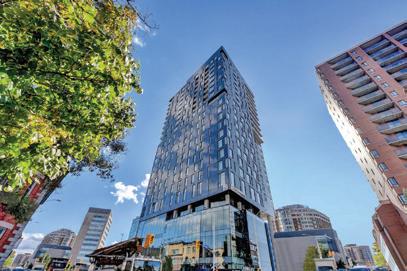
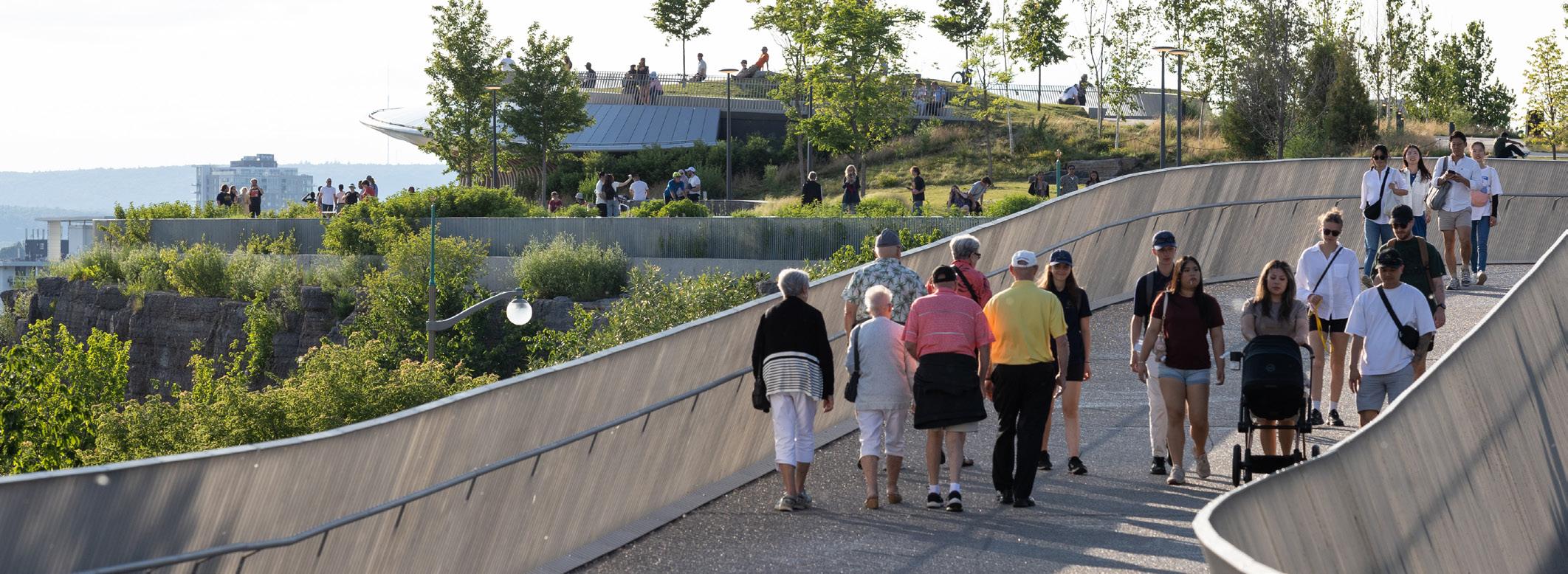

Its aim is to honour “the site, river and the territory, which continue to support the integrity of the Algonquin Anishinābeg culture and values of its livelihood,” reads a sign when you first enter the park.
A statue of explorer Samuel de Champlain, which once stood prominently atop the hill since its unveiling in 1915. now sits in a different location along the walking path. Also gone is his three-metrehigh stone pedestal. The former site is now a grove of pine trees with lots of seating.
Another model of “Anishinabe Scout"
BY CHARLIE SENACK
As
Beyond the breathtaking views, the
land pays homage to Canada’s past Indigenous culture.
The site, formally known as Nepean Point, recently reopened after a $45-million multi-year revitalization project. It was renamed Kiweki, which is an Algonquin word meaning “to return to one’s homeland.”
Left: The new Pìdàban footbridge connects Kìwekì Point to neighbouring Major’s Hill Park.
Middle: the urban lookout offers stunning views of the Ottawa River. PHOTOS BY KEITO NEWMAN.
Insert: A statue of explorer Samuel de Champlain now stands at a less prominent spot.
PHOTO
BY CHARLIE SENACK.
It’s positioned in a way that symbolizes scouting over the river to the north.
“At the heart of this transformation is the wisdom, generosity and leadership of the Algonquin Nation,” said Norm Odjick, director general of the Algonquin Anishinabeg Nation Tribal Council. “Our many voices have guided every step of this process, and this space stands as a reflection of our culture, stories and enduring presence.”
Along the edge of the hill are sculptures of animals that one could easily spot near the Ottawa River. One example is the Walleye, a fresh-water fish which lives in the Kichi Zibi and the surrounding lakes.
“I worry about the future because I need to swim up the rapids to spawn,” reads a sign next to a sculpture of the fish. “I travel to the same spot every year, but dams make this

Next to it is an otter, with a sign reading that their fur is sometimes used in the braids of Algonquin Anishinabeg regalia. “They believe that my fun nature reminds us to always balance work and play,” it reads.
There is also a Wisakedjak — or better known as a Gray Jay — which are considered a good omen in the Algonquin culture, but could also be a sign of danger.
“I remind us that it is in our bravery, resilience, and commitments to one another that we find growth,” a sign says.
The site also now includes the new Pìdàban footbridge which connects Kìwekì Point to neighbouring Major’s Hill Park. The crossing restores a historical pedestrian link that had been cut off
When markets fluctuate, it’s natural to feel uneasy about your investments - should you make changes or hold steady? At the Caldwell Wealth Management Group of RBC Dominion Securities, we offer professional investment management and comprehensive financial planning that can provide confidence and clarity during turbulent times
Want a second opinion? We offer a no-obligation consultation on your current portfolio.


Caldwell Wealth Management Group of RBC Dominion Securities
Tom Caldwell, MBA, CIM, CFP
Senior Portfolio Manager
613-721-8656
tom.caldwell@rbc.com
Samantha Caldwell, MBA, CIM Investment Advisor 613-783-9594 samantha.caldwell@rbc.com
303 Moodie Dr., 4th Floor, Ottawa, ON ca.rbcwealthmanagement.com/web/tom.caldwell/


SICO® PROLUXE® SRD RE WOOD FINISH is a one-coat, high-quality, translucent finish for use on a variety of properly prepared exterior wood surfaces such as siding, rails, decks and deck furniture.






Local, Canadian Owned and Operated
BY DAVE ALLSTON
The woods at the north end of Champlain Park have always been a fun place to explore, as many traces of the past lie beneath and even partially exposed in some areas. Though fairly thickly wooded today, this wasn’t always the case.
Prior to the arrival of the Parkway in the 1960s, the streets of Champlain Park extended all the way north to the Ottawa River shoreline, with many houses and cottages sprinkled throughout this space.
One unique structure stood within these woods, and part of its foundation can still be seen today. This long lost piece of history in fact played a key role in a major development of the west end in the 1930s – the arrival of water and sewers.
At the time, Nepean Township began at Ottawa’s city limits on Western Avenue, and thus still included Champlain Park, Westboro and other neighbourhoods. What had largely been farmland only 30 years prior had become quite developed. However, in an increasingly industrialized and modernized world, the Township still lagged behind in basic services such as water and sewers. Homes all across the west end still used wells or the River for water, or even a home water delivery service, while using outhouses and creeks for its sewers. It was a problem that needed to be addressed.
It was also a challenging time, as the Great Depression had set in, and unemployment rates were high.
To combat both issues, Nepean Township Council took the daring decision to borrow heavily against the future and build these critical pieces of infrastructure while reliable, affordable labour was available.
In the fall of 1930, Nepean Township

1. A 1949 photo of the pumphouse on Keyworth.
2. An Ottawa Citizen clipping from Nov. 13, 1930 advertising when work will start.
announced a $650,000 sewers and waterworks project for parts of the township ($11.6M in 2025 money), which would benefit parts of Westboro, Laurentian View (Hilson Avenue area), and Champlain Park. The Township received grant money under the federal Unemployment Relief Act to help. The project stipulated that at least 75 per cent of the workers hired to perform the labour be residents of Nepean.
All property owners served by the new system would pay additional taxes at $0.15 per foot of frontage per year, in thirty annual installments.
The project was done in partnership with the City of Ottawa, who would provide the linkages to the existing city infrastructure.
To prepare, the City built a 16” water main in 1931 which extended the existing Ottawa system west from the corner of Gladstone and Parkdale, up Parkdale to

Tyndall, west to Holland, north to Byron, then west to the city limits at Granville Avenue. At this spot, in the centre of Byron Avenue, large meters were installed to measure the amount of water going to Nepean. The agreement stated that Ottawa would supply a maximum of 1,000,000 imperial gallons of water per 24 hours, and Nepean would pay 16 cents per 1,000 gallons for unfiltered water. (When filtered water would arrive in Ottawa in 1932, the rate to Nepean residents would increase proportionally to what Ottawa residents would pay). The city paid $35,000 for the construction of the main and meters, and added a 12” main connection at Clarendon and a 6” main connection at Holland to benefit its own residents in Wellington Village.
For sewage services, Champlain Park would play a pivotal role.
Prior to 1931, a significant amount of sewage from Nepean flowed north by gravitation through long-established ditches
and underground channels through the middle of Champlain Park, and east through Tunney’s Pasture. So a strategic location was selected at the northwest corner of Keyworth Avenue and Pontiac Street to construct a sewage pumping station. Cast iron pipes would then carry the sewage pumped from Champlain Park along Pontiac Street, across onto Tunney’s Pasture, south at what is today Goldenrod Driveway, then travelled east in a direct line to Burnside Avenue to a connection made into the Ottawa system around Laroche Park. It would then travel to the outfall sewer on Slidell Street by the Lemieux Island Bridge, and deposit into the Ottawa River – untreated.
Contracts were awarded in late 1930 for the construction of the water mains and sewer pipes. Progress was fast, but there were many Nepean Township neighbourhoods and streets that needed services, stretching out as far as McKellar Park and Carling Avenue. Projects were planned in batches of streets throughout the early 1930s.
At the same time, the contractors like Grant Bros. were laying the sanitary sewer trunks and water mains.
Most homes had not been built with these services in mind, so home owners were responsible for renovating their own homes for plumbing and bathrooms, and then required the township to connect to the main lines within their street. This was a costly and complex renovation to perform, which would keep many homeowners from connecting to the new services for many years. In April 1931, Nepean awarded the contract for construction of the sewage pumphouse on Keyworth to Grant Bros. for $17,644. The contract for the pumps went to well-known Hamilton firm Smart Turner Ltd., for $2,683.
Work on the pumphouse started almost immediately. It was a small one-storey structure, constructed of concrete blocks, approximately 20 by 20 feet in size, and situated near Keyworth and Pontiac. A large concrete tank, 40 by 30 feet, was constructed underneath.
Despite the lack of information, it is presumed the station started opening in the summer or fall of 1931.
But it was a flawed system, one which west end residents would be stuck with for the next 20 years. In his self-published book “Memories of West Ottawa”, long-time neighbourhood resident Lorne Parker recalled: “When the Ottawa [River] rose for any reason, the back pressure forced the raw sewage up the sewer lines and through the manhole covers…was a common site to see human excreta, paper and used condoms spurting up through the holes from the sewer covers. Some residents were unlucky enough to have this occur in their basements if the backwater valves in their sewers were unable to withstand the pressure from the
mains…The people responsible for such an inadequate and marred design likely never knew that the Ottawa rises in the Spring. I remember the ongoing maintenance of replacing pumps and motors due to overloading of an inadequate system.”
On June 5 , the city completed installation of the meters at Byron Avenue, and water flowed into Nepean for the first time. The line ran for about 1,500 feet west of Granville. Within a week, another section opened up, including part of Westboro and Champlain Park.
With all the streets being dug up, the Township realized it would need to grade the streets upon completion, and made plans to begin paving some of them as well.
Proctor & Redfern was the Torontobased engineering firm responsible for the oversight of the project, and their report in November 1931 noted that, just under a year after the project had begun, 10 miles of sewers and waterworks had been laid, at a cost of $525,000. A further two miles of work on sidestreets was to be finished at a cost of another $50-60 thousand, bringing the total project cost well under budget of the original $650,000 estimate.
The little sewage pumphouse on Keyworth Avenue continued to operate into the 1950s, keeping the sewage flowing east into Ottawa despite all of the aforementioned issues.
However, in August 1949, the City of Ottawa announced a massive $22,852,000 ($310M in 2025 money) program of water and sewers that would upgrade existing infrastructure and add services for those still without it. This was important, particularly as a large portion of Nepean was about to be annexed to Ottawa in 1950.
As part of this program, the West Nepean Collector, running from Britannia to Booth and Wellington, was constructed at a cost of $3.7M. At 23,500 feet, it would leave the Keyworth pumping station redundant.












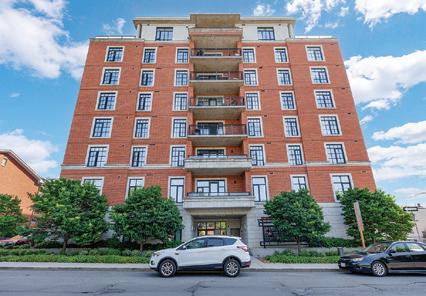




BY DAVID CUMMINGS
After months of public backlash, Chinatown’s Northwood Recovery was set to close permanently on June 9. But to the surprise of area residents and elected officials, the safe supply clinic reopened under a new name that same day.
New Dawn Medical, as it’s now known, is operating with the same staff and mission as before. According to its website, New Dawn operates 20 locations across Ontario and provides treatment for substance use, ranging from opioids and benzodiazepines to alcohol.
Somerset Ward Coun. Ariel Troster recently met with Dr. David D’Souza, the clinic’s new doctor in charge, on June 23. But she is waiting for noticeable change before forming any judgement.
“I would say it was a good meeting,” Troster said in an interview with the Kitchissippi Times. “I’m cautiously optimistic, but the proof will be in the pudding regarding what the neighbourhood looks and feels like in a couple of weeks.”
D’Souza took over from Dr. Suman Koka, who operated Ottawa’s Northwood Recovery branch remotely from Sudbury. In April, CBC reported that Koka billed $2.5 million to public insurance in 2024 for the Ottawa location, a figure which only compounded local mistrust.
Based in Toronto, D’Souza has his work cut out to prove to residents that New Dawn Medical will offer any tangible change in the neighbourhood.
“Until we see change in the immediate area, I don’t think the community’s going to have much faith because there’s a lot of bad blood given their experience with the previous clinic’s ownership and the shock that, on the day they were supposed to

PHOTO BY DAVID CUMMINGS.
Ever since they’ve opened, the entire neighbourhood has just declined to the point where nobody wants to come down here anymore
— James Taylor
close their doors, they stayed open with the same staff,” said Troster.
Perhaps nobody has a better view of the clinic’s immediate area than James Taylor, who owns and operates Hangout Cafe across the street. From Taylor’s point of view, the clinic takeover has been no more than a name change, calling the management switch a “big, big middle finger.”
“Ever since they’ve opened, the entire neighbourhood has just declined to the point
known safe supply drug prescribed to stave off addiction for over 24 hours — patients need to take Dilaudid every 3-4 hours for a similar effect. According to Turley, this means patients are leaving the clinic with bottles of pills.
“Some of these folks who are really addicted to fentanyl and the really strong stuff, what they wind up doing is they sell or trade the Dilaudid for stronger stuff,” Turley said.
Outside of trading pills, Turley said he’s seen dealers selling Dilaudid to young people.
“It’s a pill mill and it’s predatory,” Turley said. “I don’t think they’re helping anybody.”
D’Souza did not respond to KT’s multiple requests for comment, but he told CTV his number one priority is to prevent medication from leaving the clinic and being sold on streets.
Ottawa’s Centretown and Chinatown neighbourhoods have been hit hard by Ottawa’s toxic drug crisis and the social service challenges which follow.
The neighbourhood’s discontent with the Somerset Clinic isn’t without layers of nuance. Many locals are in favour of safe supply sites, just not in favour of how Northwood Recovery handled that role.
Resident Nevin Emmanuel used to walk his 9-year-old son to and from Devonshire Community Public School, where they would pass by Northwood Recovery every day. Although his son has since switched schools, their experience left a mark.
“We’ve seen people who are passed out, who are incapacitated or who are acting in a way that kids shouldn’t see because they’re intoxicated or otherwise compromised in a way that it’s not safe for kids,” Emmanuel told KT.
Earlier this year, the Somerset West Community Health Centre was forced to close its safe consumption site due to new government regulations which prohibited such facilities from operating near schools or childcare centres.
where nobody wants to come down here anymore,” Taylor said. “I’m bleeding money because of this place.”
Ryan Turley, a Dalhousie Community Association board member, lives a block away from the clinic. He said the facility’s impact on the neighbourhood stems from their safe supply practices, including prescribing patients hydromorphone, an opioid sold under the brand name Dilaudid.
Unlike methadone — another well-
In its place, a HART Hub has opened — which stands for a Homelessness and Addiction Recovery Treatment Centre. While it provides some support to those battling addiction, there is no place for users to inject illicit drugs safely.
The Ontario government says it focuses on primary care, mental health services, addiction care and employment support. Each hub will receive $6.3 million annually, which is four times more funding than what the safe consumption sites collected in support.









By Charlie Senack
For more than a century, a quiet corner of the Central Experimental Farm has held the promise of something bigger. Tucked behind the Dominion Arboretum, past trails lined with wildflowers and trees that have seen generations, is a 34acre site that has been earmarked to become Canada’s National botanical garden. But the idea is still waiting to take root.
Talk of a botanical garden dates back to the late 1880s when the Central Experimental Farm was created. A portion of the land was slated to be used for the Dominion Arboretum and another section for the botanical oasis.
Over the years, there have been
various attempts by the federal government and other groups to start construction. But in the 1980s, it was announced that if a botanical garden was ever to be built, it would need to be by a third party. A sign promoting the greenspace was then taken down.
Shortly after, the Ottawa Botanic Garden Society decided they wanted to resurrect the project and came up with a business plan which was tabled in 2011 called Canadensis. A decade and a half later, no movement has occurred.
“Great ideas take a little bit longer, but this is getting to be a little ridiculous. It is hard to understand because it's always been a desire to create a botanical garden. We are the only G20 country that does
not have a botanical garden in their capital city,” said Gérald Lajeunesse, who is chair of the Canadensis board of directors. “That is unacceptable because there is a lot to celebrate. Ottawa has a large history of horticulture, agriculture, and botanic culture. We see this as an opportunity to showcase all of these achievements on the world stage by having a botanical garden.”

The latin word Canadensis means “of Canada” or “from Canada,”
and is a term used in taxonomy, particularly in biology, to denote that a species is either native to or strongly associated with the northern country. The botanical garden, as Lajeunesse sees it, would be focussed on Canadian species, native species, species that survive and thrive in the Canadian environment. Plans propose a visitors centre, lookout, amphitheatre and an elevated, treetop boardwalk. Canadensis was last told by the
National Capital Commission to break the project up in phases of 10 acres each. A foundation has given the group a large donation to start the front-end work, including a major capital campaign, but that can't start until a better lease is secured.
After ground can be broken on Phase 1, it would take three to five years to complete.
“The difficult part of it, and I come back to why we can't move until we have a long-term lease, is because there's a lot of hidden development infrastructure work that has to be done like sewer, water, power, everything that gets hidden underground,” said Lajeunesse. “Those are all very expensive costs you can't start investing in if you don't at least have a guarantee for the land.”
Despite the delays, some programming is offered on 10-12 acres of the 34-acre site. Year-toyear leases mean any work on the land needs to be removable, so walking paths are regularly mowed instead of permanent. There are also a variety of art installations. Every fall, Canadensis hosts its biggest event, a fall fair, which teaches the importance of botanical gardens. But this year it will most likely need to be cancelled due to construction work on the barn which has been delayed.
The world is currently in a climate crisis with weather patterns severely changing. Last year will go down as the warmest year on record with a wide margin of 1.18 C above the 20th-century average. The Earth's temperature has risen significantly, with an average increase of about 1.1C since 1880, and the warming rate has more than doubled since 1981.
Lajeunesse said that means Canadians need to adapt, and botany plays an important role in research and climate change adaptation.

“The research component of the botanical garden would be focussed on how to fight climate change,” he said. “But the other component is education and that is equally important.”

Canadensis has recently been educating on the dangers of the dog-strangling vine – also known as vincetoxicum rossicum which is a flowering plant in the Apocynaceae family. The perennial herb is native to southern Europe and is a highly invasive plant growing in all of the Eastern United States, in the mid west, and southern Ontario and Quebec.
The botanical garden also started a native tree nursery where people can donate saplings of their unwanted Maples or oaks. Last year two dozen native trees were planted on the Experimental Farm site in partnership with Mādahòkì Farm as part of the site's future windbreak. Twelve native conifers were also planted at the Hunt Club area farm.
“We are very interested in working with the First Nations community,” said Lajeunesse.
Botanical Gardens have also evolved from places that were once “look at me don't touch,” noted Lajeunesse, who said they are now very interactive spaces.

Left insert: Gérald Lajeunesse chairs the Canadensis board of directors.
Top: Various Art instalations can be found around the 8-10 acre Experimental Farm site.
Right insert: The Canadensis sites offers a piece of nature in the middle of an urban city.
Above: Canadensis is located near the Rideau Canal and Fletcher Wildlife Garden. ALL PHOTOS BY KEITO NEWMAN.
Lajeunesse, who used to work as head of Landscape Architecture and Ururban Design at the National Capital Commission, said he's hopeful a renewed interest in the century and a half-old project will mean work can soon finally start.
“Interestingly, Canadian botanical gardens belong to the American Public Garden Association because
there isn't one in Canada. Maybe the time has come to build on this nationhood and pride that we have now since our neighbours to the South have decided to be nasty,” said Lajeunesse. “Maybe we should be relying a lot on our own accomplishments and celebrating those accomplishments to put us front and centre."


There’s never been a better time to join the Soloway Jewish Community Centre! Whether you’re looking to stay active, connect with others, or explore new programs, the SJCC truly has something for everyone.
Our newly renovated change rooms and state-of-the-art Fitness Centre offer a modern, welcoming space to work out and unwind. Members can enjoy more than 65 weekly group fitness classes — from SpinFit and Tai Chi to Uplift and Bootcamp — with new options being added all the time to keep things fresh and motivating. Looking for personalized support? Our certified personal trainers are here to help you reach your goals with customized fitness plans. Plus, our Body Composition Testing goes beyond the scale to give you a deeper understanding of your health and progress.
The saltwater pool is a highlight for many — perfect for lap swimming,

SJCCMembersenjoyPickleballincluded inmembership
aquafit, lessons, or just splashing around. Prefer land-based activities?
Our full-size gymnasium is a hub of activity with drop-in basketball and pickleball included in your membership. But the SJCC is so much more than just a fitness centre. Members enjoy early registration and discounted rates on everything from summer camps and school break programs to engaging cultural events and educational workshops. Your membership also includes access to the Greenberg Families Library — a cozy space for readers of all ages.
Fall Program registration begins on August 11 for SJCC Members. Open Registration starts on August 18. Come in for a tour and try us out for free! JCCOttawa.com
Elmwood is more than just a school, because she’s more than just a student.
To






By Nathalia Lencioni
Ottawa’s autumn season ushers in a spectacular transformation: a city blanketed in red and gold, cool weather days tinged with woodsmoke and a calendar packed with cultural celebrations. As the capital prepares for the months ahead, residents and visitors alike can expect a lineup of markets, fairs, festivals and outdoor activities throughout the season. Here is an in-depth guide to the events and experiences happening across Ottawa this fall.
One of Ottawa’s signature destinations, the ByWard Market, remains a vibrant commercial hub during the fall, combining historic ambiance with the season’s atmosphere.
A particular highlight of the fall season is the Day of the Dead Festival from Oct. 31 to Nov. 2. This non-profit event, which celebrates Mexican heritage, will include a variety of food vendors, an indoor artwork gallery, live music and dance performances, as well as contests and workshops. The family-friendly festival aims to honor the traditions of Día de los Muertos through authentic cuisine and cultural showcases, drawing both Ottawa’s Mexican community and curious locals.
Another specialty market, the Ottawa Mystic Market by Mabon, will take place at the Next Door Market and Event Space on Sept. 20 and 21, from 11 a.m. to 5 p.m. The event coincides with the fall equinox and promises a selection of handcrafted

tarot and psychic readings, and with local artisans. According to market organizers,
anyone looking to add some magic to their

On Oct. 11 and Oct. 18, the 613flea market returns to the Aberdeen Pavilion at Lansdowne Park. This market houses over 140 vendors, offering everything from vintage collectibles and handmade crafts to baked treats and vinyl records. Admission is free, and the event is held indoors, making it an all-weather destination. The 613flea market is known for its support of small businesses and for providing a platform for local creators to showcase their talents.
Ottawa’s CityFolk Festival is a cornerstone of the city’s autumn cultural calendar. Running Sept. 10 to 14 at Lansdowne Park, CityFolk will showcase an eclectic roster of artists. The 2025 lineup includes Morrissey, The Pogues, Melissa Etheridge, Indigo Girls, Dropkick Murphys, Down with Webster, USS and Alex Warren. According to the festival’s website, in addition to music, festival goers can expect food trucks, beer gardens and vendors of handcrafted items, creating an animated atmosphere on the Great Lawn. Evenings will feature performances spanning folk, rock, alternative, bluegrass and hip hop music.

From Sept. 20 to Nov. 2nd, Saunders Farm hosts the annual PumpkinFest. This autumn celebration features pumpkin displays, hedge mazes, wagon rides, live stage shows and seasonal snacks. Activities are designed for attendees of all ages, with special attractions for children such as a pirate ship playground, woodland adventure structures and family-friendly wagon rides. The event also offers zipline rides and game zones. Nighttime at the farm from Sept. 20 to Nov. 1st will feature FrightFest, Saunders Farm’s Halloween experience. FrightFest includes the newest addition - thrills of The Sawmill and the newly renovated Haunted Hayride as well as an array of other haunted attractions.
Proulx Farm’s Pumpkin Fest runs from Sept. 20 to Oct. 26, another family-oriented fall staple just east of downtown. Visitors can participate in pumpkin picking, navigate corn mazes, ride wagons, interact with farm animals at the petting zoo and enjoy a multitude of playgrounds.
Continues on page 34



Entry covers access to all outdoor attractions, and the farm is open on weekends and Thanksgiving Monday for festival activities.
Celebrating its 169th year in 2025, the Metcalfe Fair will take place from Oct. 2 to 5 in the Village of Metcalfe, southeast of Ottawa’s core. This traditional fair features agricultural shows, culinary and craft competitions, midway rides, live music and a variety of fair foods such as caramel apples and poutine.
The event is a showcase of rural Ontario traditions, with competitions ranging from homecrafts and flowers to livestock and junior produce.
Throughout late September and October, the National Capital
Region comes alive with vibrant fall foliage during Fall Rhapsody.
The fiery colours can be experienced on trails in Gatineau Park, a sprawling wilderness just across the Ottawa River, as well as in city parks like Major’s Hill and Rockcliffe Park. The National Capital Commission (NCC) provides free weekend shuttle buses to Gatineau Park’s main trailheads and scenic lookouts, making car-free visits accessible.
Urban paths along the Rideau Canal and Ottawa River offer picturesque walks and cycling routes under the red and gold canopies. The event draws visitors from across the province, turning Ottawa into one of the country’s most photogenic capitals each autumn.

*BONUS SPECIAL ANNIVERSARY *BONUS SPECIAL ANNIVERSARY ART SHOWS ART SHOWS THIS FALL AT THIS FALL AT




As the sun continues to shine, the Dovercourt team is already looking ahead and preparing for an exciting fall session. At Dovercourt, September marks the beginning of a new year filled with dynamic programs and activities for all ages.

Kicking off the season, Dovercourt introduces its popular “Try It Week,” running from September 8 to 14. This special week allows participants to explore various recreation and fitness classes without a commitment, providing the perfect chance to discover new interests. Registration for “Try It Week” opens on August 17, so mark your calendars to secure your spot in classes that interest you.

Aquatic enthusiasts can start fall swim lessons on September 13, with registration already open. Dovercourt proudly offers the Lifesaving Society’s nationally recognized “Swim for Life” program, known for its evidence-based and effective instruction. The program is led by National-level trainers and a dedicated team of qualified staff who are passionate about teaching children how to swim safely and confidently.
Recreational drop-in swims will resume when the pool reopens on Saturday, September 13, providing flexible options for swimmers seeking casual fun or fitness.
For fitness enthusiasts, the Fit Pass is available year-round, providing access to over 45 classes each week. Registered specialty and aqua fitness classes begin on September 8, offering a wide range of options, including yoga, strength training, spinning, Pilates, and Zumba. Whether you’re a seasoned athlete or just beginning your fitness journey, there’s a class to suit your goals.
Dovercourt’s sessional recreation programs begin on September 15, featuring a diverse selection of activities in arts, sports, music, theatre, and more. Additionally, one-session recreation workshops are available for those eager to try something new without committing to a full session, making it easy to explore different interests.
Adding to the fall festivities is a “Movie in the Park” event on Friday, September 12. This community gathering under the stars offers a perfect evening of entertainment for families and friends.
With a comprehensive lineup of programs and events, Dovercourt’s fall season promises a vibrant period of learning, fitness, and community connection. Don’t miss out—register early and embrace a new year of exciting opportunities.








